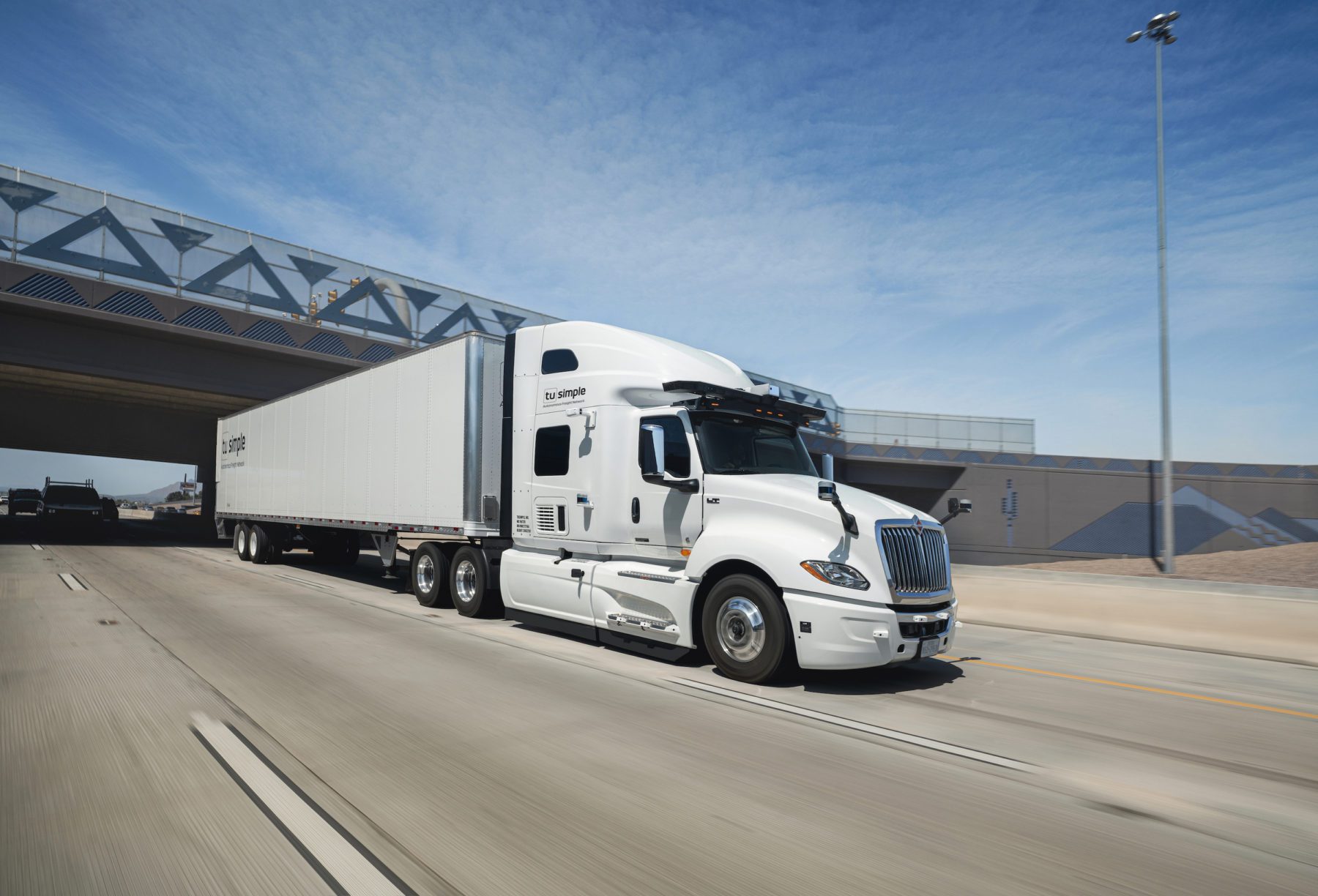Heavy duty trucks course covers the basics and peeks at the future

Heavy duty trucking is one of many vehicle-based industries that could improve safety and efficiency through the use of connected and automated vehicles and supporting technologies. Imagine a platoon of 18-wheelers traveling the country, sharing data with each other about dicey road conditions ahead while maintaining steady, fuel-saving speeds.
Nexus, the online and professional education unit within the University of Michigan’s College of Engineering, offers a “Dynamics of Heavy Duty Trucks” short course that teaches students the fundamentals about how big rigs perform, such as handling, braking and tire performance.
As a bonus, they get a glimpse of the future.
Last month, Nexus wrapped up its “Dynamics of Heavy Duty Trucks” course by taking students to Mcity, where Assistant Director Vicki Waters led a tour of the Mcity Test Facility. The facility opened in 2015 as the first purpose-built proving ground for connected and automated vehicles and technologies.
Today, many commercial transportation companies are developing fully-automated, driverless trucks, making a visit to Mcity especially relevant to the heavy trucks students.
Waters provided a detailed overview of the facility’s features and capabilities, which have expanded in a number of ways since 2015. Augmented reality now brings virtual vehicles into the test site where real vehicles can respond to their actions in real time. Robotic pedestrians are available. There’s a working railroad crossing (with a virtual train, of course). A shipping container-turned house-facade is complete with a ramp for wheelchair access to test accessibility solutions. And robust, repeatable test scenarios can be designed and executed using software and an app developed by Mcity that is accessible to anybody with an internet connections.
“We think of the test facility as a sandbox where all “toys” are welcome,” Waters told the students. “We have all the necessary technology that industry and researchers are looking for to test connected automated vehicles.”
The tour included an in-depth look at Mcity’s on-site fleet of connected and automated research vehicles. Students also saw a driverless minibus-type vehicle manufactured by NAVYA, a French firm. Mcity used two NAVYA shuttles in its Mcity Driverless Shuttle research project studying consumer attitudes about and trust in automated vehicles. The Mcity shuttle operated on a portion of U-M’s North Campus from June 2018 through December 2019.
“Seeing this facility encourages me to start implementing more innovative ideas into my trucking company,” one participant said of the tour.
Visit the Nexus website to learn more about other courses focused on transportation and mobility, offered under the banner “Mobility at Michigan.”
Quotes excerpted from “Heavy Trucks Learners Explore Mcity,” by Britney Rivers, published on the Nexus website.
Photo credit (feature photo): TuSimple